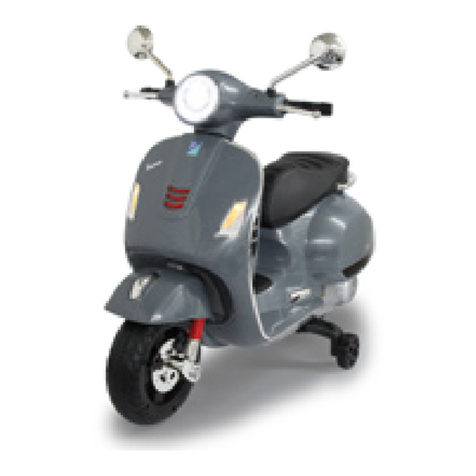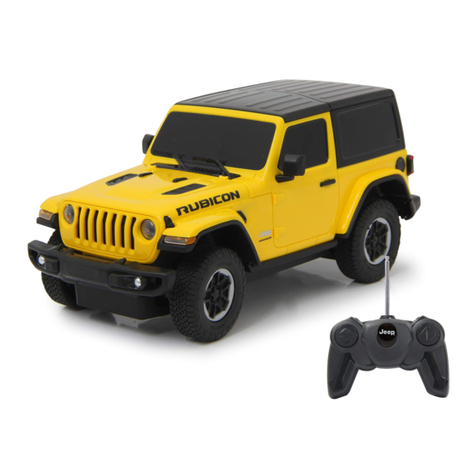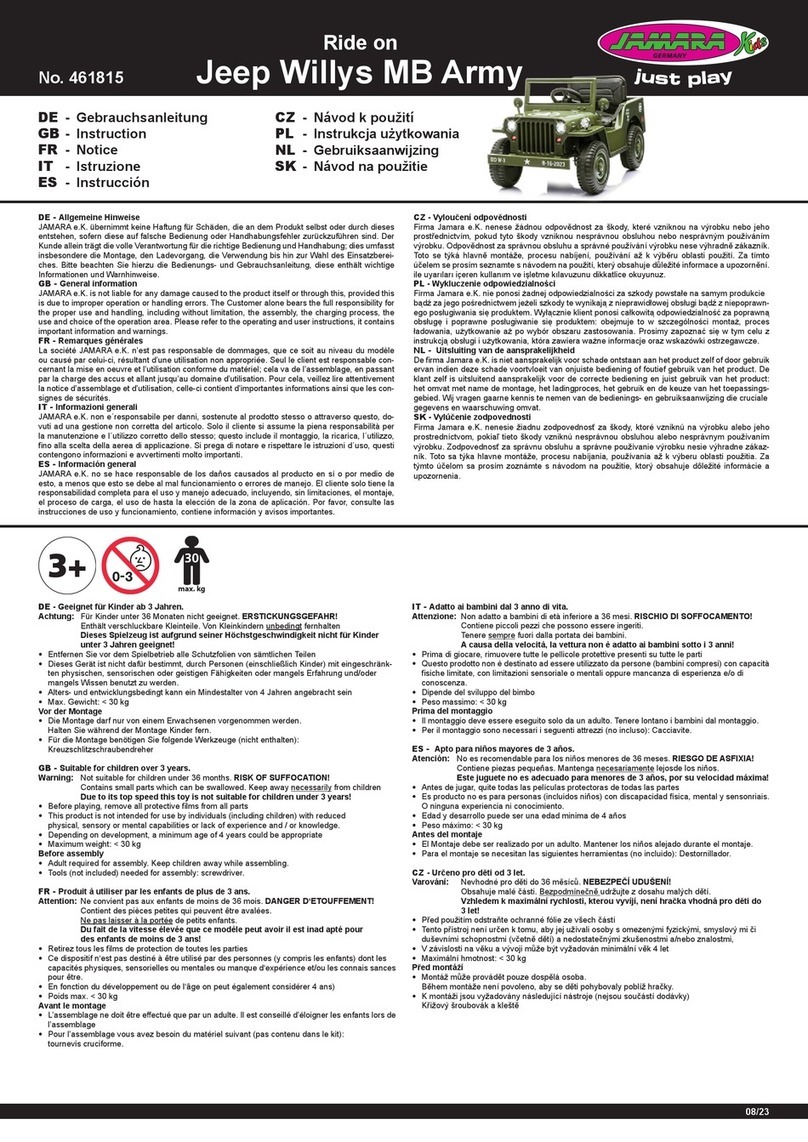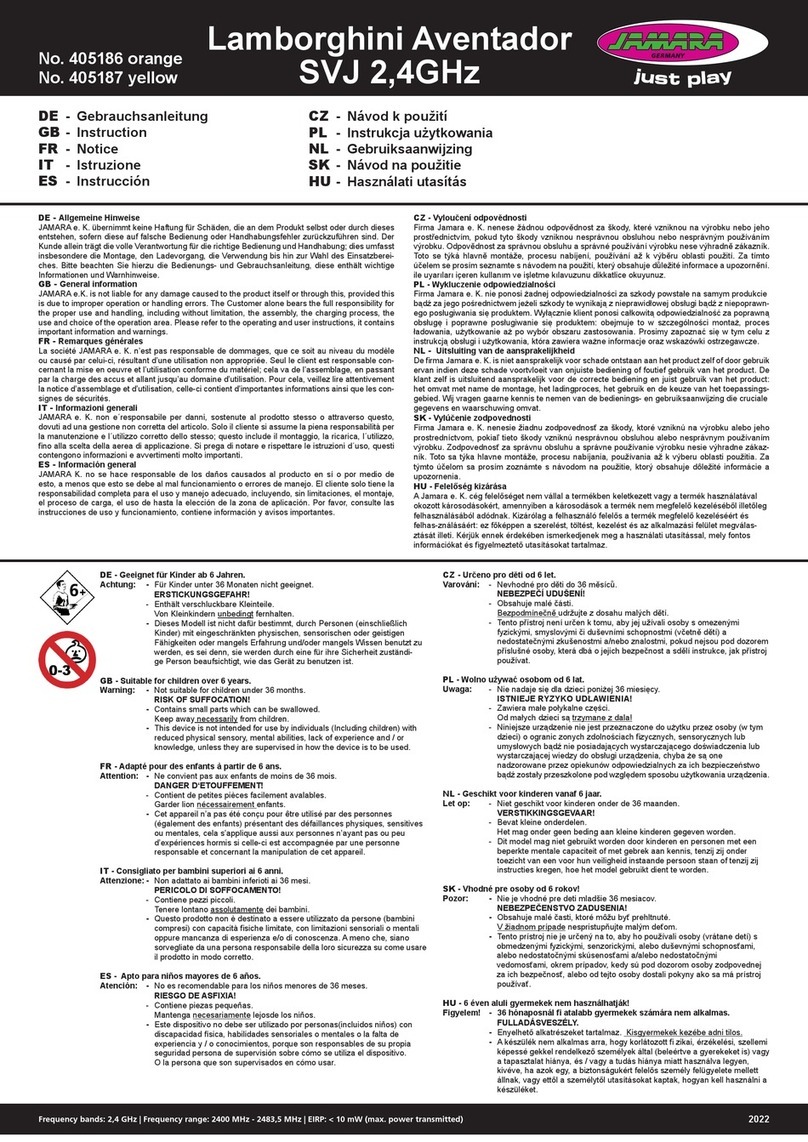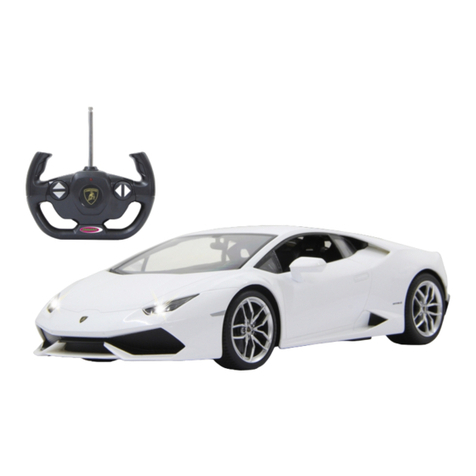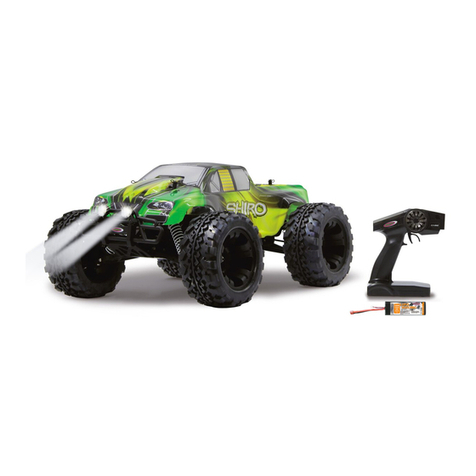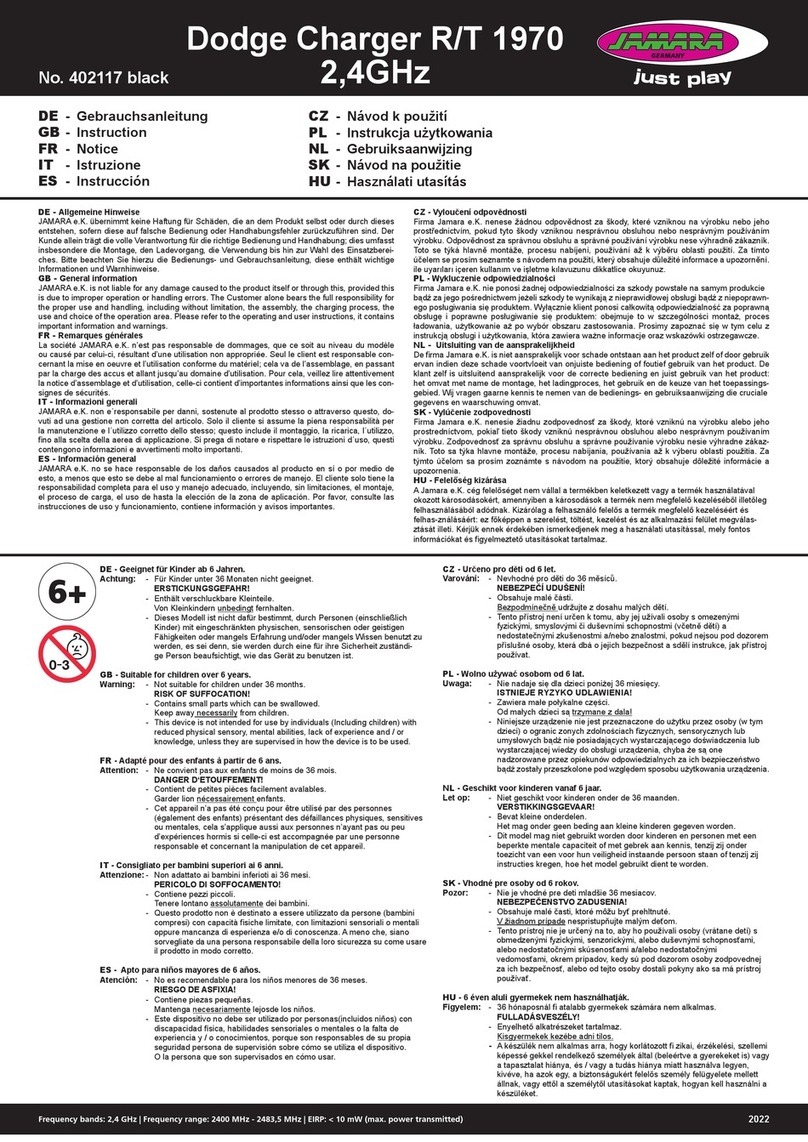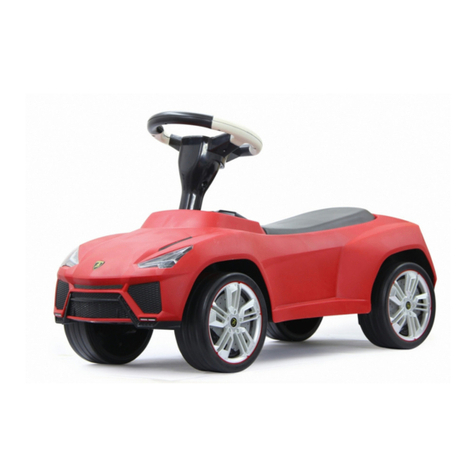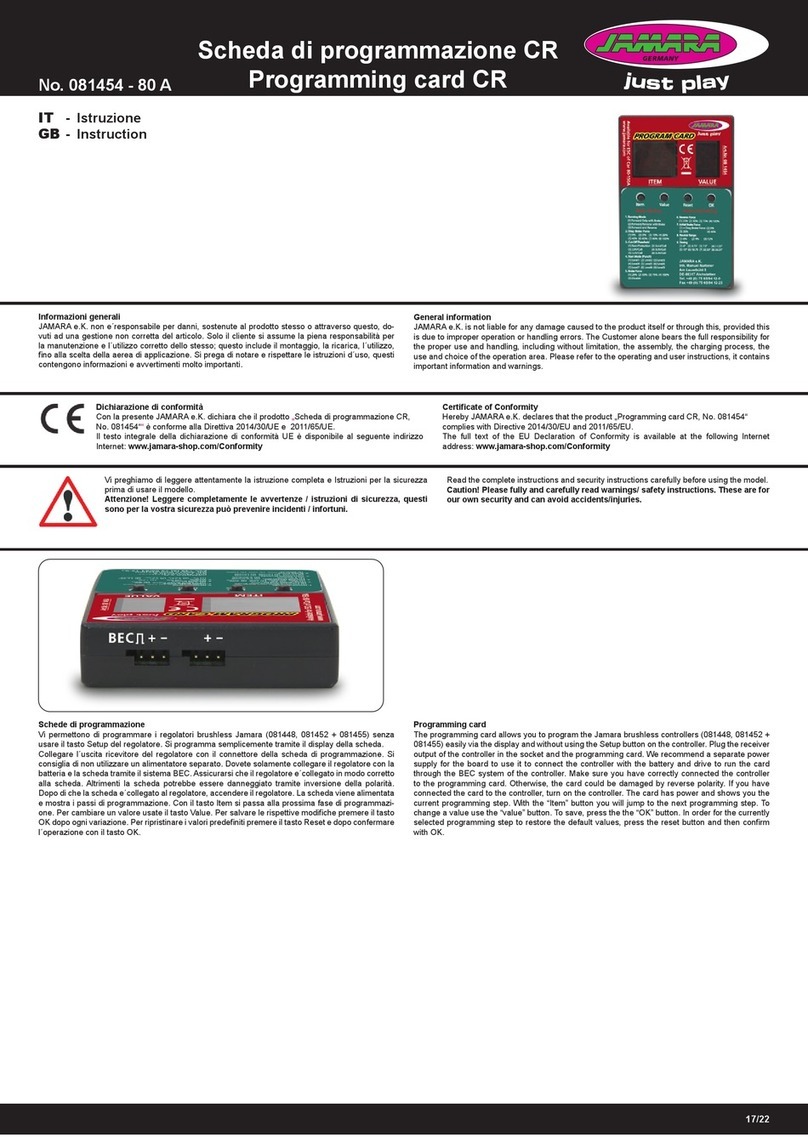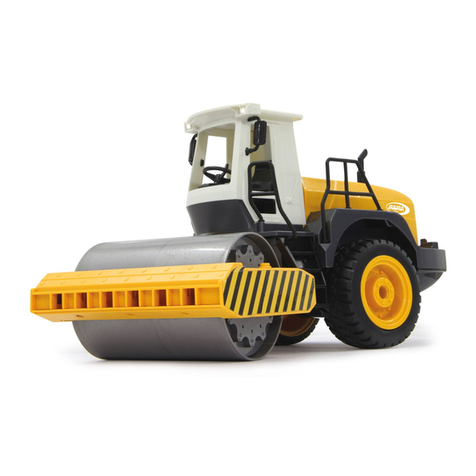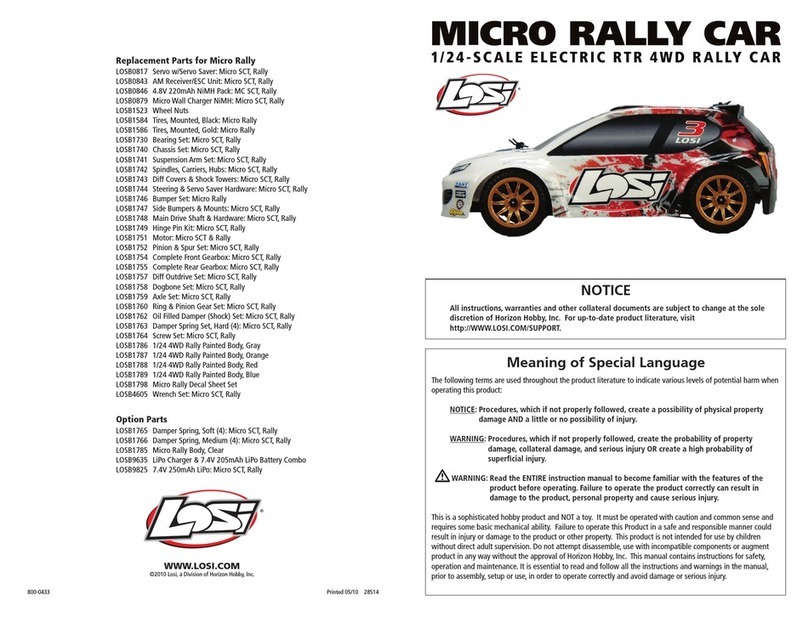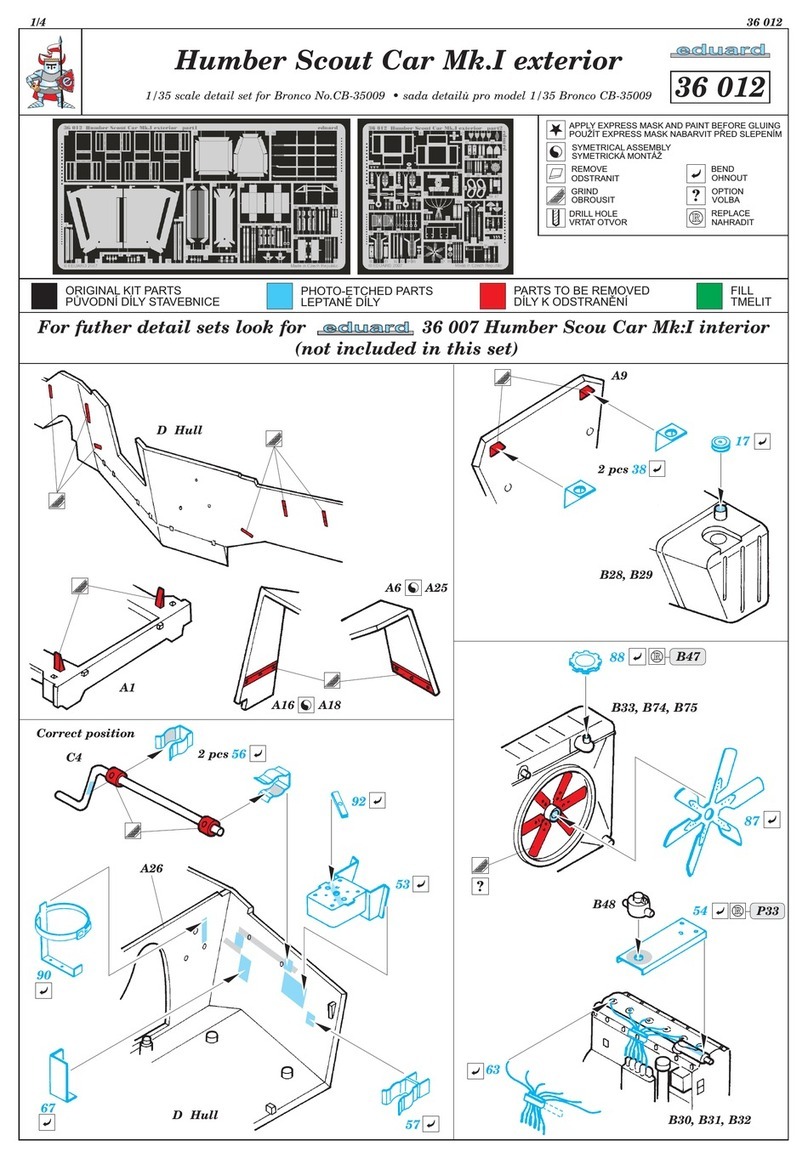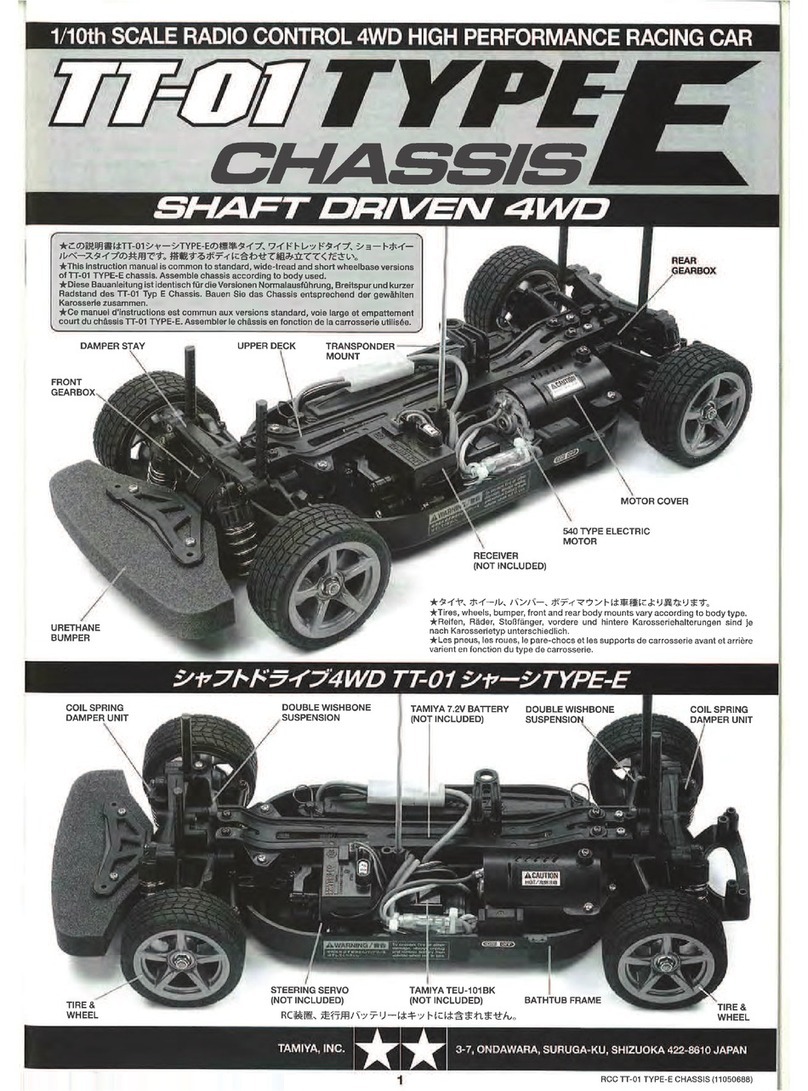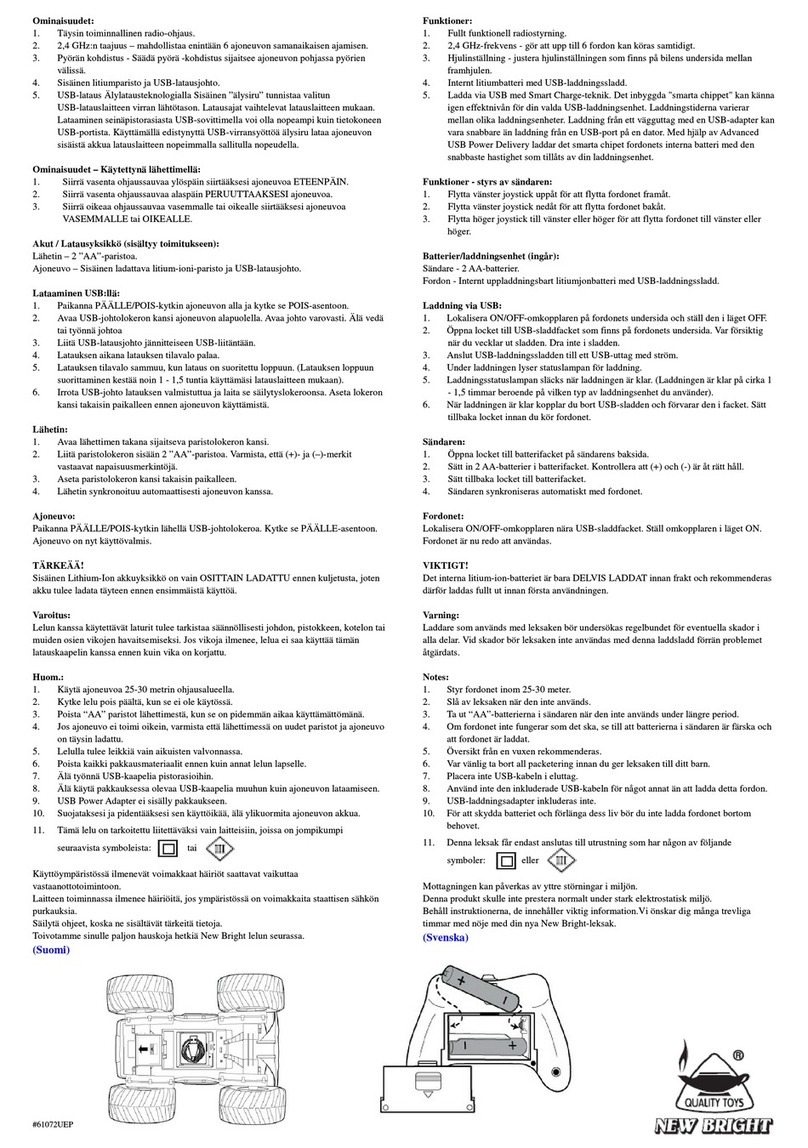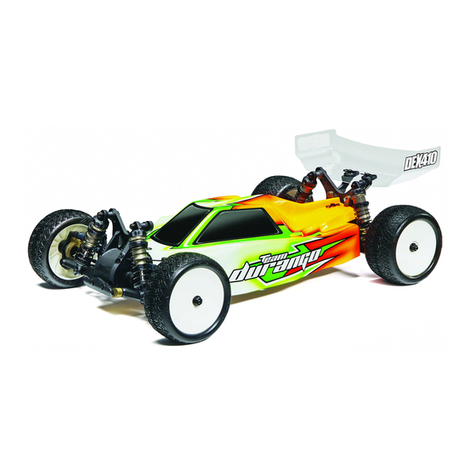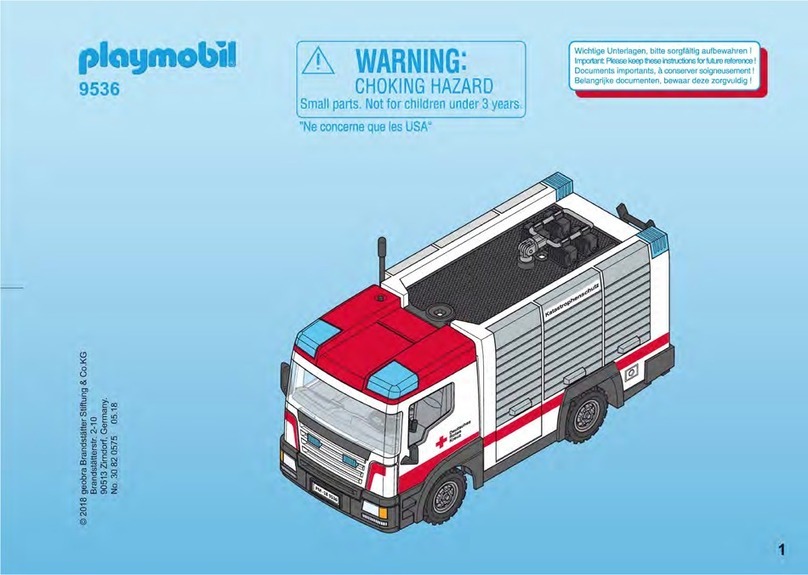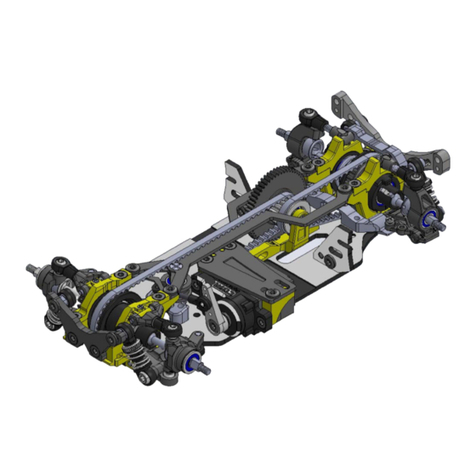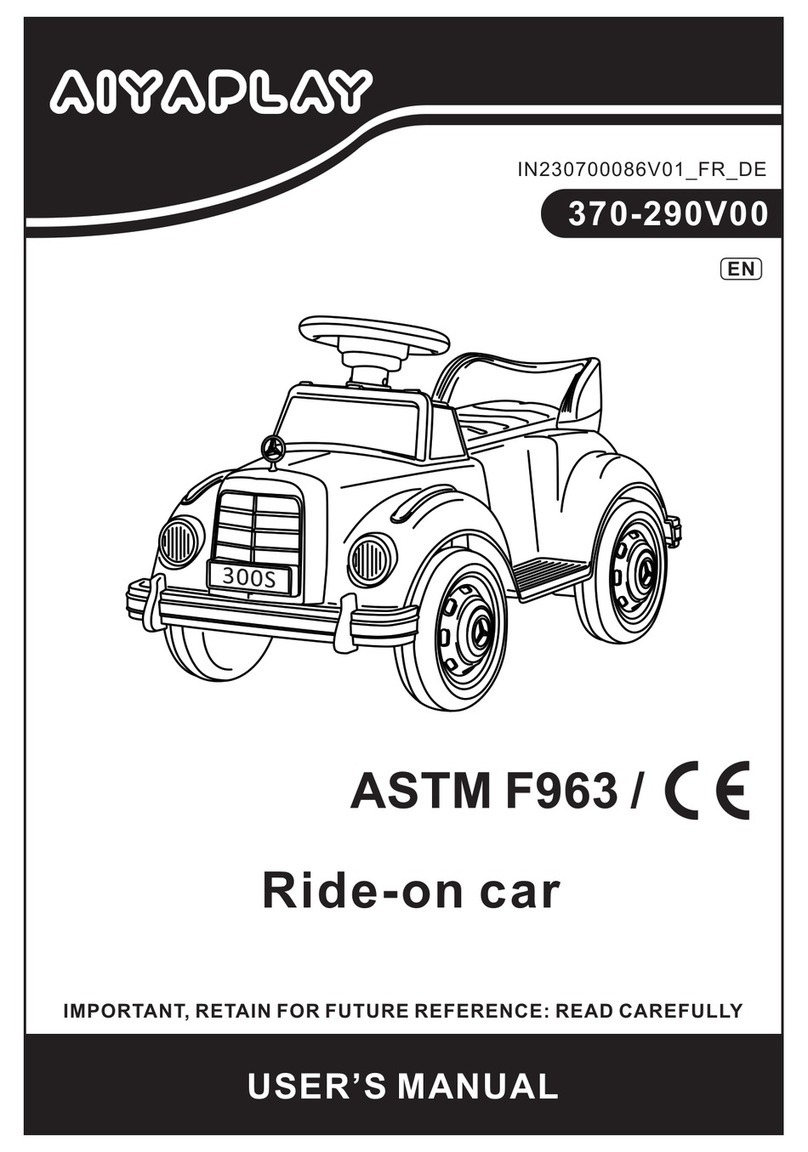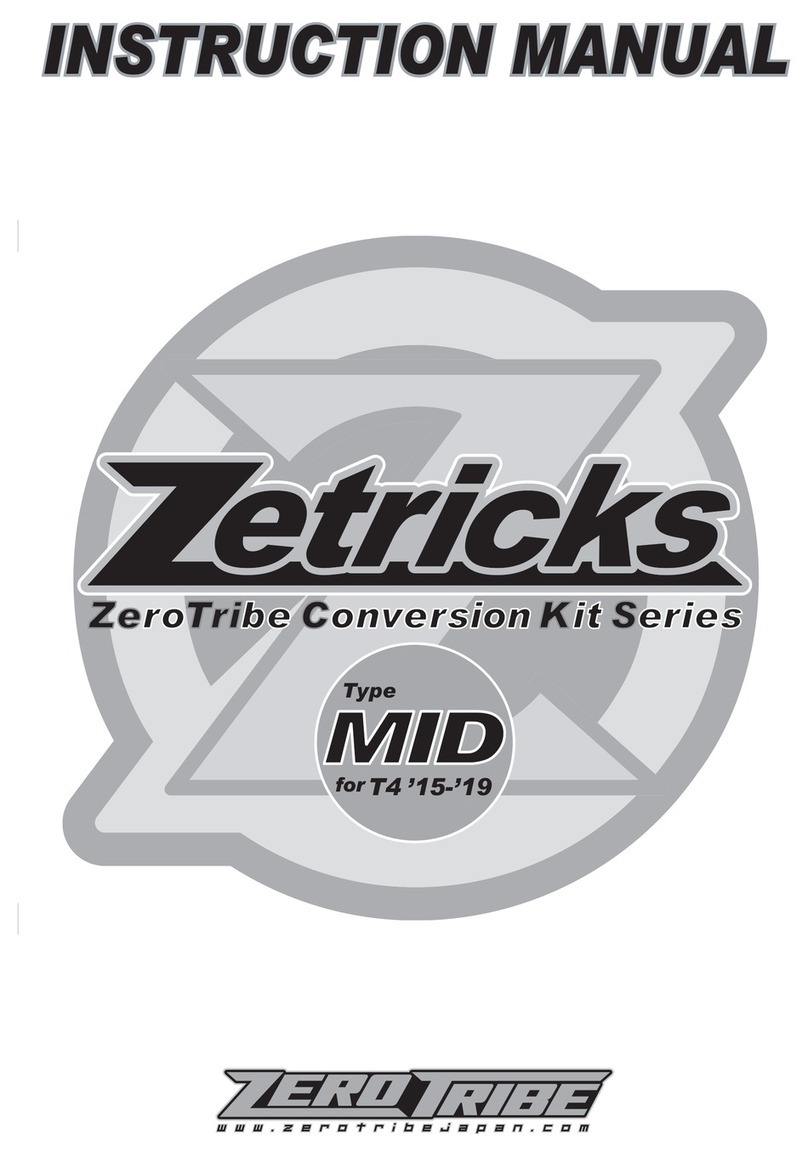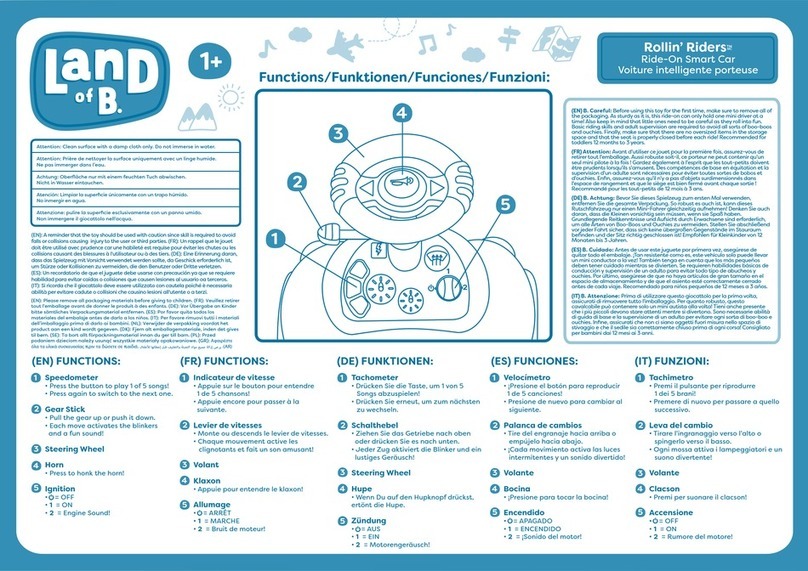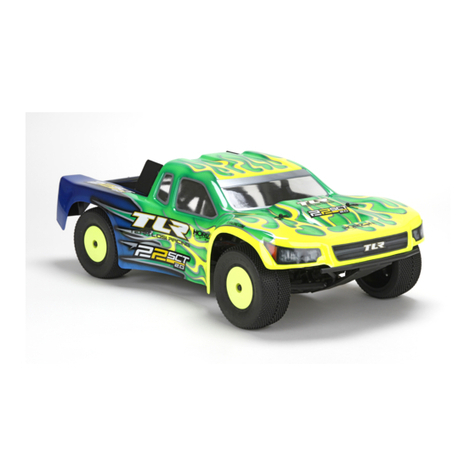
7
Segnali e dispositivi di sicurezza
Durante il normale funzionamento, i segnali LED hanno i seguenti signi cati:
a. Quando l‘acceleratore è in posizione neutra, non è accesa né la LED rossa né la LED verde.
b. Il LED rosso si accende quando il veicolo è in movimento in avanti o indietro. Durante la
frenata, il LED rosso lampeggia velocemente.
c. I LED verde si accende quando il generatore di gas e in max. posizione avanti o indietro.
Tramite segnali d’avviso, il regolatore richiama l‘attenzione su determinate condizioni:
1. Durante l´avvio, il processore controlla la tensione d’ingresso, quando è al di fuori dei limiti
consentiti, un tono duale con una pausa di un secondo tra i singoli segnali „bipbip, bip-bip,
bip-bip-“ lo segnala.
2. Quando il segnale d’ingresso non è corretto, sarà generato un suono con una pausa di due
secondi tra i singoli segnali „bip-,-bip, bip-“. Questo regolatore è dotato di una serie di
dispositivi di sicurezza per un funzionamento sicuro:
1. Spegnimento sottotensione:
Non appena la tensione di una batteria LiPo, per un periodo di 2 secondi, va sotto la soglia
impostata, il motore si spegne. Notate che il motore non può essere riavviato, se la tensione
di una cella è inferiore a 3,5 V. Batterie NiCd o NiMH con una tensione compresa tra 9,0 V e
12,0 V, sono trattate come una batteria LiPo a tre celle. Le batterie con meno di 9.0 V come
un due-celle LiPo-Pack. Se per esempio, una batteria NiMH ha una tensione di 8,0 V, e la
soglia è impostata a 2,6 V per cella LiPo, l‘arresto avviene a 5,2 V (2 x 2,6 V). Cosi anche le
celle di NiCd, sono ef cacemente protetti contro una scarica profonda.
2. Spegnimento per sovratemperatura:
Appena la temperatura del regolatore, per una durata di 5 secondi, supera il valore di 95 ° C,
il motore si spegne. Dopo lo spegnimento, è necessario lasciare raffreddare il regolatore,
altrimenti il regolatore sarà danneggiato. Questa funzione non può essere disabilitata!
3. Segnale d´ingresso difettoso
Se il segnale d’ingresso per un periodo di 0,2 sec è rilevato come errato e motore si spegne
LED’s, errors and protection
In normal use the LED will illuminate as follows:
a. If the throttle control is in the neutral position, neither the red or green LED will illuminate.
b. The red LED will illuminate if the vehicle is driving forwards or in reverse. If the vehicle is
braking, the red LED will fl ash rapidly. When the car moves forward, the red LED solidly
lights; the green LED also lights up when the throttle stick is at the top position (100%
throttle).
c. The green LED will illuminate when the vehicle is at full throttle either forwards or in reverse.
In certain circumstances the ESC will omit an acoustic tone to warn you of a problem:
1. On switching on, the ESC will check the battery pack voltage and if it falls outside the correct
values it will omit double signals followed by a 1 second pause: “beep-beep-, beep-beep-,
beep-beep-”
2. If the ESC does not receive a signal from the transmitter it will omit single signal followed by
a 2 second pause: “beep-, beep-, beep-”
The ESC has ben equipped with a series of protective circuits to ensure safe operation:
1. Low voltage cut-off:
If the voltage drops below the set value for more than 2 seconds the ESC will switch the
motor off. Please note that the motor cannot be started again if the voltage is below the
choosen value per cell.
2. Temperature cut-off
If the internal temperature of the ESC rises above 95°C for more than 5 seconds the motor
will switch off. After the ESC switches off it has to cool down before operating again.
Otherwise the ESC will be damaged. This function should not be disabled!
3. Signal loss
If the signal is lost for more than 0.2 seconds the ESC will switch the motor off.
IT
Questo regolatore è dotato di numerose opzioni di con gurazione. Per raggiungere il Suo obiettivo
di programmazione ottimale in modo rapido e sicuro, si tiene fede al menu mostrato nella struttura
della tabella sopra e le opzioni di programmazione. Le singole fasi di programmazione della tabella
hanno i seguenti signi cati:
1. Modalita´di guida
Nel modo gara punto 1, il veicolo sta viaggiando solo in avanti, il freno e´attivato, la marcia
inversa e´escluso. Questa modalità è adatta per le competizioni. In modalità di guida, punto
2 (avanti / indietro con freno), il veicolo può anche invertire con funzione freno attivato.
Questa modalità è adatta per le operazioni normali e per principianti.
Nota:
Nella 2.modalità di guida, è necessario confermare l´operazione due volte per avere l´effetto
d’inversione. Se si passa la leva in avanti, per la prima volta nella zona inversa, il motore
frena. Il veicolo si ferma, ma non totalmente. Ora, se la leva viene premuto nuovamente
nella zona inversa, inverte il veicolo, pero prima si ferma brevemente. Quando la leva viene
nuovamente spostato in avanti, indipendente se il motore è in frenata o in modalità inversa, la
macchina poi viaggia nuovamente in avanti.
2. Freno:
In questo menu, l‘azione minimo di frenatura del freno, viene impostato come valore. Il campo
di regolazione è compreso tra 0 e 40%.
3. Sottotensione
In questo punto po’ essere impostato il valore di spegnimento. L‘intervallo d’impostazione è
tra 3,4 - 2,6 V per cella. Appena è superata la soglia, il regolatore spegne il motore.
4. Start Modo:
Con questa opzione è possibile impostare come deve essere eseguito la partenza. C’è la
possibilità di scegliere tra 4 modi, diversi, da delicato a molto aggressivo. Si noti che per le
modalità „aggressivo e molto aggressivo“ si deve usare batterie particolarmente potenti con
bassa resistenza interna. In caso contrario, avvengono sottotensione e il motore gira su solo
con ritardo. Inoltre, il motore e la trasmissione sono da regolare, secondo la modalità di
avviamento desiderata.
5. Forza frenante massima:
Il regolatore è dotato di un freno che agisce proporzionale alla posizione della datrice. Il più
forte effetto si ottiene quando la leva viene spinto completamente in avanti. Un forte effetto
frenante porta il veicolo a un arresto rapido, che d‘altra parte, è collegato a un elevato grado
di usura dei parti meccanici come per esempio l´ingranaggio.
Per aggirare la programmazione tramite il pulsante Setup, il regolatore può anche
essere programmato facilmente tramite la scheda di programmazione venduto separa-
tamente (Cod. 081454).
GB
This ESC is tted with many useful functions and to help you to be able to make the most of the
various options they are explained below. Please use the programming table shown on page 6
together with these explanations to program your ESC quickly and effectively:
1. Drive mode:
If option 1 is selected in Drive mode, the vehicle will only drive forwards and the brake is
active which make this mode the best choice for racing. In mode 2 the vehicle can be driven
forwards or in reverse and the brake is also active. This mode is useful for general use and
training.
Note:
When option 2 is selected, moving the throttle control back past the neutral point will initially
activate the brake. If the throttle control is then moved back to the neutral position briefl y the
ESC will switch over to reverse. Moving the ESC forwards will make the vehicle drive
forwards regardless of whether it was braking or moving in reverse.
2. Drag Brake force:
In this option the drag braking force can be set. The value is set as a percentage and the
values are from 0 to 40%
3. Low voltage:
In this option you can set the low voltage cut-off value. The cut-off voltage can be set between
3.4 and 2.6 Volts per cell. Once the cut-off voltage has been reached the motor will stop.
4. Start Mode:
With this option you can choose how the vehicle will accele rate when full throttle is applied
and you can set the value between ‘Soft‘ and ‘Very Aggressive‘. Please note that if you select
one of the 2 ‘Aggressive’ modes that you will need to have batteries with a very low internal
resistance otherwise the voltage will drop due to the high current draw and the motor may
stutter. Also ensure that your motor and gearing are capable of carrying the high loads.
5. Brake Max.:
The ESC is equipped with a braking system which works proportionally to the
throttle control. This means that the further the throttle control is moved rearwards
the more braking force will be applied. A higher value here will mean that the
vehicle will brake harder but more strain will be placed on the components, for
example, the gearing.
To avoid the programming procedere with the set up botton, you can all so use the
seperatly available Programmcard (Ord.No. 08 1454).
Le caselle grigie indicano l’impostazione consigliata. The elds which are shaded in grey indicate the factory recommended settings.
Programmazione del regolatore Programming the ESC
Fase di programmazione
Program Mode
Valori del programma
Program Value
1 2 3 4 5 6 7 8
1. Modalità di guida
Drive Mode
In avanti freno on
Forwards, brake on
avanti / indietro,
freno on
forwards / reverse,
brake on
2. Freno
Drag Brake Force
0 % 5 % 10 % 15 % 20 % 25 % 30 % 40 %
3. Sottotensione
Low Voltage
aus
OFF
2,6 V/Zelle
2,6 V/cell
2,8 V/celle
2,8 V/cell
3,0 V/celle
3,0 V/cell
3,2 V/celle
3,2 V/cell
3,4 V/celle
3,4 V/cell
4. Start modo
Start Mode
sanft
soft
normal
normal
aggressivo
aggressive
molto aggressivo
very aggressive
5. Forza frenante massima
Brake Max.
25% 50% 75% 100%
